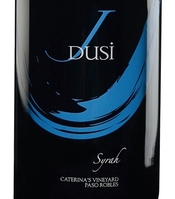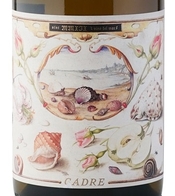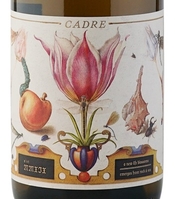Praising a well-known winemaker as a “legend” or a” rockstar” has become quite common in wine circles, usually to justify an exorbitant bottle price or an inflated score. The clichés and the hype are really piled high when the wine was blessed by one of those high-flying consulting winemakers who pop up in many places.
Here’s an example: “The winemaker here is the one and only Julien Fayard. With a few wine degrees under his belt from UC Davis, he started at Lafite Rothschild and Smith-Haut-Lafitte before conquering the Napa Valley. He worked alongside the illustrious Philippe Melka.…”
So, it was a refreshing change to hear from a couple of winemakers making exceptional wines but who aren't touted as walking on water. My recent conversation with one began with this:
“I am the fourth generation following the three before me who love to farm and grow grapes. I knew I wanted to make wine at a young age, and did begin early with my grandfather teaching me the basics.”
Fourth Generation, really? Sure, sounds like the first person quoted is from France or Spain or from another European country. Four generations, if my math is okay, take you back 100 years which is very unlikely in California wine. But hold on.
The person quoted is Janell Dusi, the young winemaker behind J Dusi Vineyards. Her pioneering Dusi family has been part of Paso Robles since 1925 when it first planted Zinfandel. The vineyard was expanded primarily to Zinfandel in the 1940s. When explaining that she continued to learn more about winemaking by working alongside her dad who continued as a farmer, Janell adds, “In addition to our 140 acres of old vines, he also farmed about 20,000 acres of wheat and barley.” We are talking farmers — not a hedge holding of some insurance company.
The Dusi Family and Paso Robles
The Dusi family’s vineyard is an icon among Zinfandel fans who know it through the high scoring and coveted Old Vine Zins made by Turley Cellars, Ridge Vineyards, Tobin James and others. After buying vineyards over the last 15 years, Dusi now has a little over 500 acres, says Janell, “that we grow and farm ourselves and sell most of the fruit to other wineries who in turn use our name in the label as a vineyard designation. I buy about 10% of the grapes we grow for J Dusi Wines.”
As I thought about her comment, I realized winemaking is her thing, but the whole family is involved in the vineyards. In 2016 the family introduced the Paper Street label based on its new vineyard. Located on the west side of Paso in the Willow Creek AVA, Paper Street was cleared and planted on steep, rocky, soils full of limestone. Now covering 106 acres, the vineyard includes varieties such as Zinfandel, Mourvèdre, Grenache, Syrah, Clairette Blanche, Tempranillo, Carignane, Cabernet Sauvignon, and Petite Sirah.
Naturally, the Dusi family would add Zinfandel, but to have Petite Sirah listed among these more fashionable varieties tells you something. Back in the day when Concannon, Parducci, Stags’ Leap and Burgess Cellars were making headway, their flagship wine was Petite Sirah. Petite Sirah was in vogue for a time but by 1990 it had all but disappeared both in the vineyards and on most wine writer’s radar. I’ve always remained curious about it over the years probably because it was the focus of my very first published article.
I’ve continued looking into Petite Sirah as it staged a gradual comeback. Total acres planted today approaches 12,000, close to what it was in 1990. While most of the current batch of highly regarded Petite Sirahs are noted for their inky black color and rugged, tannic personality, I’ve never honestly been blown away by any. Until I tasted the 2021 J Dusi.
That 2021 J Dusi Petite is different. It has all the hallmarks of the varietal except that despite being high in alcohol, it appeals through its finesse and harmony.
It was tasted and re-tasted over two days and because my initial response seemed a bit much, I tried to curb my enthusiasm. But that was not easy.
Here’s my tasting note:
J Dusi Wines Paso Robles Caterina's Vineyard Petite Sirah 2021 ($52):

This inky black wine is stunning with an initial aroma of fresh blueberry, mocha, spice, and a floral component. Medium bodied and plush, it is pure velvet on the palate with good acidity and hints of tea and light oak in the long aftertaste, which has a touch of chocolate to bring it to a resounding finale. There’s not a rough edge anywhere. It was fermented by native yeasts and barrel aged for 18 months in French and American oak, 25% new. 100 cases were released in October, 2023.
97
While I was mulling that over, another wine stood out in a tasting, an Albariño from the Edna Valley. The winery, Cadre, was new to me, and I then checked out its Sauvignon Blanc only to find another excellent wine.
Cadre Wines and Edna Valley
Cadre, it turns out, is owned by Lucy and John Niven. His grandfather, Jack Niven, established Paragon Vineyards in 1973. Yes, that makes John the 3rd generation. Paragon was the first in the area and soon grew to 547 acres consisting of Chardonnay, Pinot Noir, Cabernet Sauvignon, Merlot, Zinfandel, Sauvignon Blanc, Riesling, Gewurztraminer, Semillon, Gamay, and Chenin Blanc.
The Niven family was instrumental in establishing the Edna Valley as an AVA in 1982. Two years before then, Jack Niven struck a deal with Chalone Winery, and co-founded Edna Valley Vineyard Winery. Niven’s Paragon Vineyard supplied fruit and its name to the Chardonnay and Pinot Noir labels in Chalone’s portfolio.
Albariño didn't enter the picture until 2005. As John explains, “In the early 2000's we had taken over a leased vineyard here in the Edna Valley that had 5 acres of Albariño (the first plantings in the region). At the same time, we had just pulled a number of old tired blocks and had plenty of fallow land.”
“Hence we went in and planted 45 acres of Albariño,” he continued, “as well as other blocks of Grüner Veltliner, Riesling, Grenache Blanc, Viognier and Pinot Gris. Obviously, our primary focus was the Albariño plantings. We sourced our budwood from the three original Albariño vineyards in California. Those were Babcock from Santa Barabra, Havens from Carneros, and the Jack Ranch in the Edna Valley which we were now farming. The cuttings from those vineyards came from the Morgadio Estate estate in the Contado de Tea in Spain’s Rías Baixas region in Galicia, as well as a neighboring vineyard to the Lusco Estate, also in the Contado de Tea.”
In 2005, John Niven started working with Albariño for the new Tangent label. “I came up with the concept and developed Tangent which was solely dedicated to exploring cool climate white wines from our estate. We had known for years that the Edna Valley is an amazing place for Chardonnay and Sauvignon Blanc. Our ability to get natural ripeness while preserving ripping natural acidity called on us to explore our white wine potential.”
For Tangent, John initially worked with winemaker Christian Rogenaut, who was formerly the winemaker for Maison Deutz. He later assisted with the Niven Family Wine Estates collection which included True Myth, Tangent, Baileyana and Zocker.
Today, with about 55 acres of Albariño planted, John continues, "I think it makes Edna Valley worthy of being called the New World of Albariño. I think there's so much upside, and it's exactly why I created Cadre. I firmly believe the Edna Valley deserves to be in the conversation as one of the great white wine grape regions in the world."
Cadre is not alone as other wineries are working with Edna Valley Albariño. Both the Stephen Ross Winery and Peloton have impressed with their wines. On my trip to Edna Valley a little over a year ago I couldn’t believe how good Peloton’s Albariño was. See my review. And I highly recommend checking out Verdad Wine Cellars with its line of Spanish varietals, including an Edna Valley Albariño.
Like Petite Sirah, Albariño presents its own challenges. It is a wine that never lacks acidity. But as John Nevin remarks, “In fact, managing that high acidity presents one of our biggest challenges, yet that is our greatest gift.”
Well, how successful he has proved to be is best shown by the 2022 Albariño. The proof is in the wine:
Cadre Wines (Edna Valley, San Luis Obispo County, California) Albariño “Sea Queen” 2022 ($24): Possibly the finest Albariño this side

of Galicia in my experience, this 2022 offers a mix of tangerine and bright citrus aromatics and is full of vibrant energy and crisp—but not stinging—acidity. Some floral and honeysuckle notes are in the background, and the spicy flavors are presented in an attractive smooth texture. Mineral, saline-like nuances appear in both the aroma and the finish. It has plenty of backbone, and the surprisingly savory texture holds off the acidity as all the parts work together.
95
As for the claim that Edna Valley is one of the world’s great white wine regions? That’s to be continued. But just to keep up the research, I bought a bottle of Cadre’s Sauvignon Blanc and here’s what I found:
Cadre Wines (Edna Valley, San Luis Obispo County, California) Sauvignon Blanc “Stone Blossom” 2021 ($22): With most of the fruit

harvested from a Paragon Vineyard block planted in 1973, the wine was stainless fermented and aged on the lees. Once poured, this wine changes dramatically in the glass. It changes from showing flinty and green pea aromas and opens up to reveal secondary aromas of melon and white peach, along with a wet stone kind of minerality. It offers plenty of vibrant flavors with mouth-coating texture, and it picks up lovely herbal and green apple nuances before finishing with a long, long crisp aftertaste. Best not to over-chill it. It could very well improve in the bottle.
96
To conclude with another cliché, it is often said “wine quality begins in the vineyards.” In many ways, both J Dusi and Cadre confirm that — though with the modification of the saying to something like, “wines quality begins in vineyards in which the winemakers themselves were raised.”